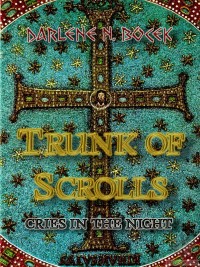2. Give it a Place
When we approach history, we must connect it to an existing framework. If our students do not have a framework, or have a weak one, we need to first establish that, then teach them to hang new information onto that frame.
Time periods are the clothesline, so to speak, from which we hang our newly acquired information. Because of this, one of the initial duties of the history teacher is to give context for the study of United States and World History.
The way the memory works best is when strong emotions (smells, feelings, tastes, passions) are connected with the advent of new information. Keeping this in mind, establish the framework through movies and fiction.
MOVIE NIGHT.
Establishing context can be as simple as finding several historical fiction movies, setting aside two weeks of school-night movies, or a regular Friday-night movie, and conducting a sequential overview of history. These can be fictional or even well-done documentaries.
Here are the movies we’ve watched this year
- Age of Independence
Tale of Two Cities, John Adams Miniseries - US Civil War
Gone with the Wind - World War I &II
History Channel’s 2014 World Wars Miniseries I can’t recommend this enough. Very well done! - Depression
Grapes of Wrath - Post WWII
Captain America I & Agent Carter Series This has given rise to many educated discussions regarding German technology, the Nazi threat, racism, the space race, “Project Paperclip” and even the Roswell mystery.
Here’s a List of more movie ideas.
HISTORICAL FICTION & BIOGRAPHIES
Another way to give children the context they need to DO REAL HISTORY is to give them access to lots of historical fiction. If you have a Kindle, if you schedule a regular trip to the public library, or if you book-exchange with other homeschoolers, the cost for doing this goes down.
While it is important to establish the reality that “lazy writers fudge historical facts in order to make their story work,” it should not hinder your using this medium.  It is more important for the student to get the general gist of the time period. Talking through the fiction vs. factual aspects is helpful. (On that note, Tale of Two Cities is one of those wrong-thesis stories. Finding out the fallacies can be part of the study of that time period.)
It is more important for the student to get the general gist of the time period. Talking through the fiction vs. factual aspects is helpful. (On that note, Tale of Two Cities is one of those wrong-thesis stories. Finding out the fallacies can be part of the study of that time period.)
My novel, Trunk of Scrolls, which takes place during the Byzantine Age of Justinian, was so scrupulously researched it might actually have happened!
Here is a clearinghouse of other Historical Fiction books.
BIOGRAPHIES, on the other hand are closer to reality, though they are also often a fictional retelling of a person’s life. Teaching your students to ‘qualify’ the accuracy of what they have read (or watched) with a critical eye can prepare them for REALLY doing history.
That said, keep close track of books your student has read. Documenting the books you read is a vital aspect of creating your TRANSCRIPT PACKET. If you don’t know about THE HOMESCHOLAR yet, visit her site. Lots of great resources for you as you prepare your transcripts and get your students ready for college!
Here is the BOOK LIST form that I use. My students are required to keep a running log of books they have read. (I require Title and Author, date read, but you could ask for number of pages, or a full citation if you wish.)
NOW WHAT?
Once you have established the framework for your unit or school year, use the characters as you introduce new units. Refer back to the characters they have met and the emotions the movie or book elicited in them will connect new information to long term memory. And new information can be built onto that. Scaffolding.
For example, “Do you remember how Scarlett’s mother chased-off the overseer at the beginning of the movie? After the war, that same man returned as a ‘carpetbagger’ to try to run the O’Hara family off the farm.”
